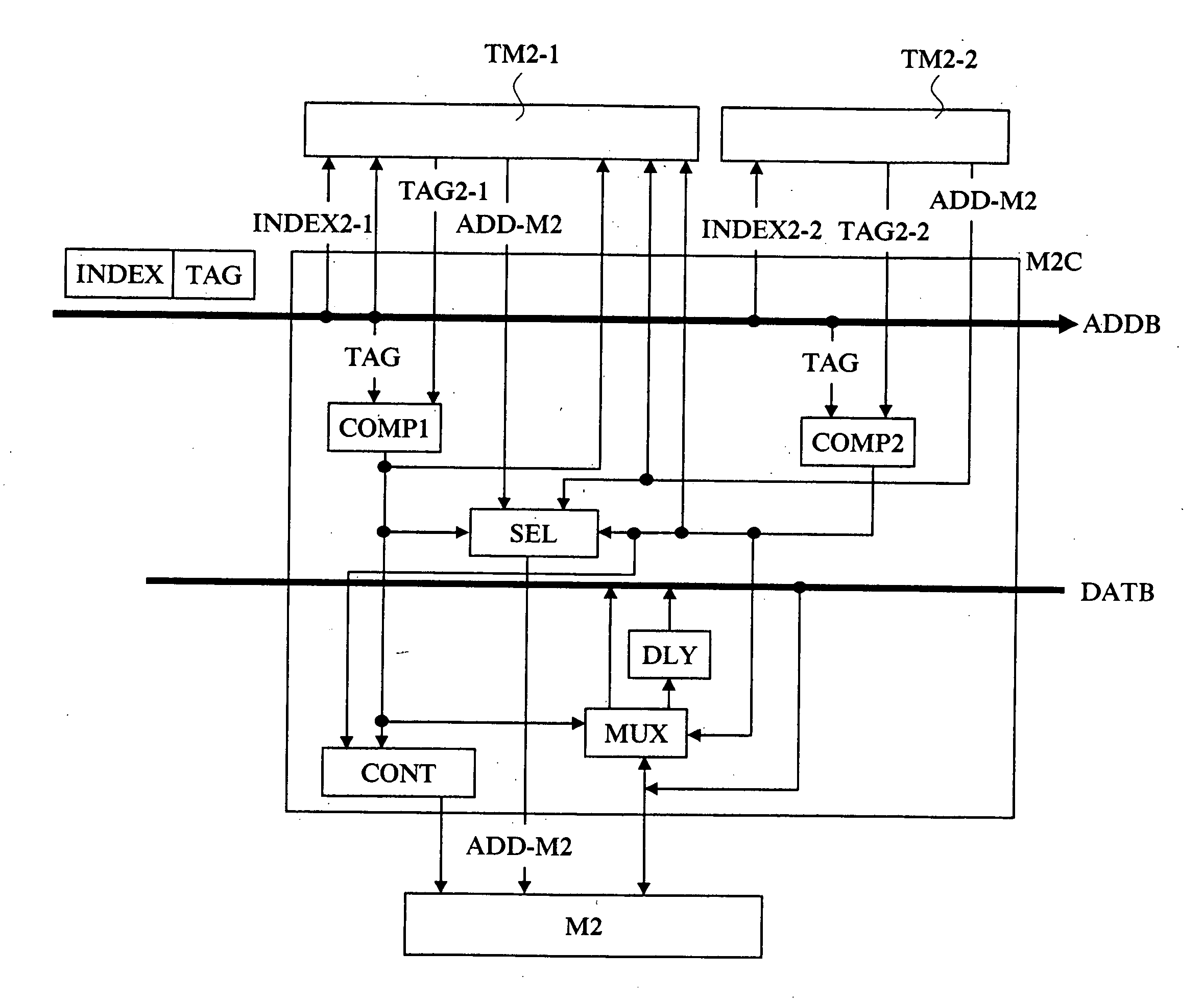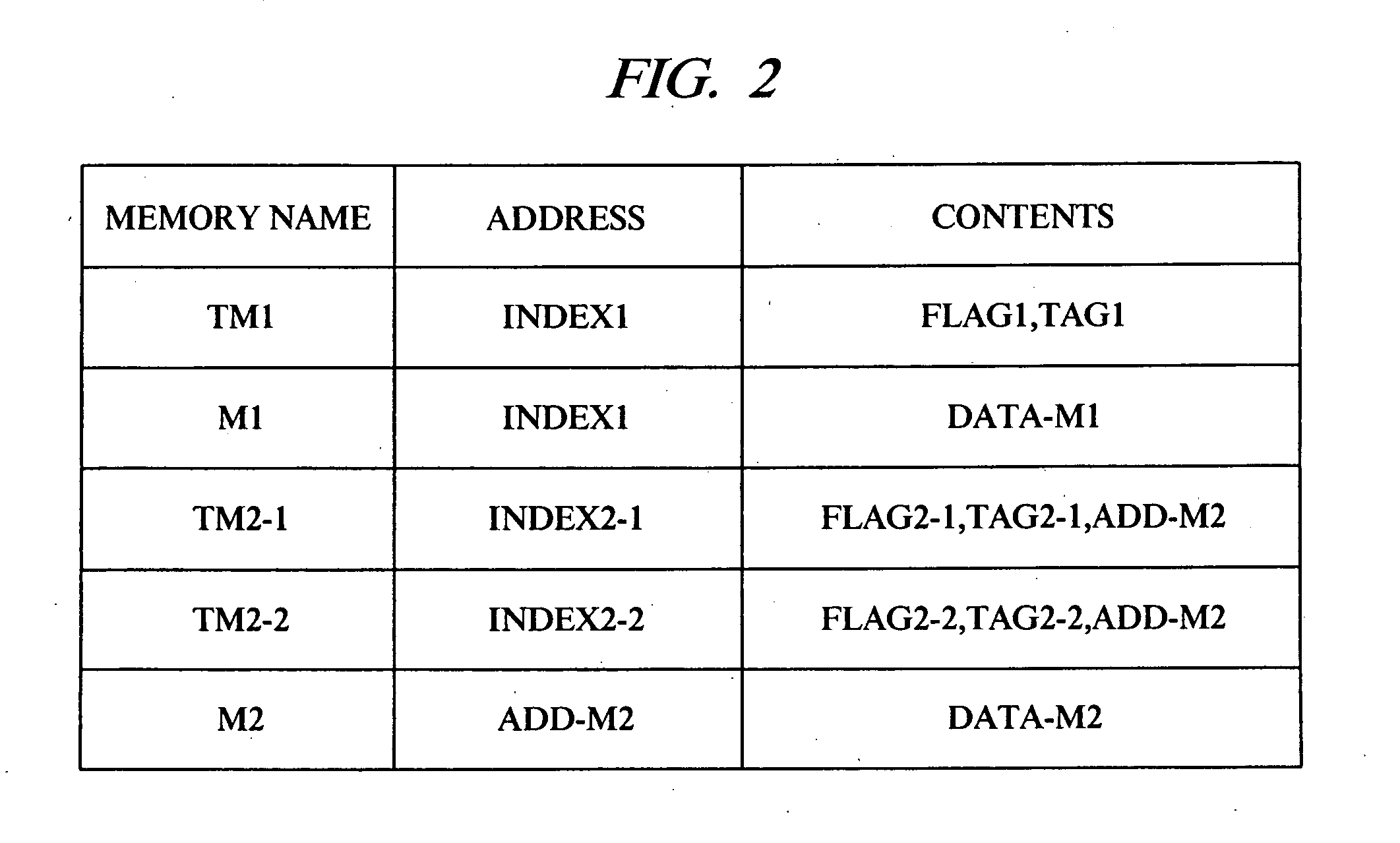Information processor
a technology of information processor and memory, applied in the field of information processor, can solve the problems of increasing the time necessary for comparison and circuit size, difficulty in reducing the thermal resistance corresponding to the temperature increase ratio per power consumption, and insufficient methods for preventing retention defects at high temperature, so as to reduce the operation power, improve reliability at high temperature, and suppress the effect of temperature increase of the first memory circui
- Summary
- Abstract
- Description
- Claims
- Application Information
AI Technical Summary
Benefits of technology
Problems solved by technology
Method used
Image
Examples
first embodiment
[0026]FIG. 1 is a block diagram showing an example of the structure of an information processor according to a first embodiment of the present invention. In FIG. 1, CHIP1 is a microprocessor chip and M3 is an external memory. In the microprocessor chip CHIP1, its main structural components are shown. CPU is a central processing unit and M1, TM1 and M1C are a primary cache memory, a tag memory for the memory M1, and a primary cache controller, respectively. Further, M2 is a second memory, TM2-1 and TM2-2 are two tag memories for M2, and M2C is a second memory controller. M3C is a controller of the external memory M3. M1 and M2 operate as cache memories of the external memory M3, and M2 also stores data for repairing defect bits of M3.
[0027] As mentioned above, M2 has two tag memories, and TM2-1 is used for storing addresses of cache data stored in M2 and TM2-2 is used for storing addresses of repair data stored in M2. By providing tag memories for M2 independently for cache and for ...
second embodiment
[0059] In the first embodiment mentioned above, an example of an information processor including microprocessor chips having external memory controllers has been shown. Such an information processor has a structure especially suitable for so-called mobile devices such as a cellular phone and the like. In a second embodiment, an example of an information processor suitable for a personal computer and a work station and others will be described.
[0060]FIG. 5 is a block diagram showing an example of the structure of an information processor according to the second embodiment of the present invention. In FIG. 5, MODULE-1 to MODULE-n are memory modules having a plurality of memories M3, a memory M2 having a function of a cache memory and a function to store repair data, and others. In the following descriptions, a dynamic memory DRAM is assumed as the memory M3. However, the present embodiment is not limited to this. These memory modules are controlled by commands and addresses from a me...
PUM
 Login to View More
Login to View More Abstract
Description
Claims
Application Information
 Login to View More
Login to View More - R&D
- Intellectual Property
- Life Sciences
- Materials
- Tech Scout
- Unparalleled Data Quality
- Higher Quality Content
- 60% Fewer Hallucinations
Browse by: Latest US Patents, China's latest patents, Technical Efficacy Thesaurus, Application Domain, Technology Topic, Popular Technical Reports.
© 2025 PatSnap. All rights reserved.Legal|Privacy policy|Modern Slavery Act Transparency Statement|Sitemap|About US| Contact US: help@patsnap.com



